Scottish Art News
Latest news
Magazine
News & Press
Publications
Edinburgh: A Tapestry Powerhouse
By Susan Mansfield, 18.11.2021
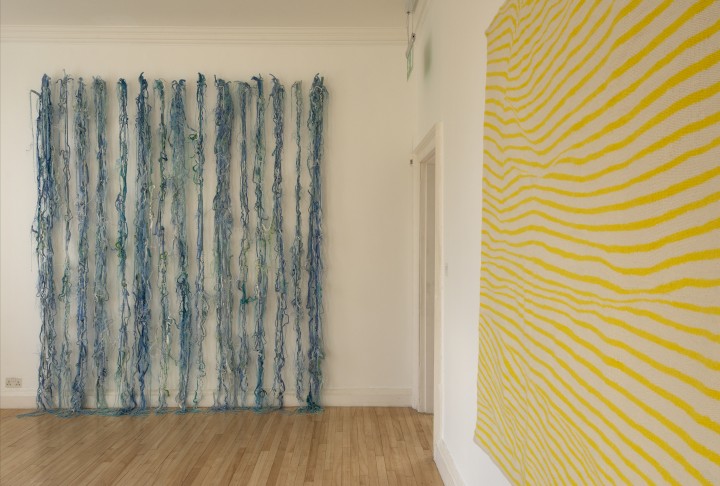
In 1963, Edinburgh College of Art caused a few raised eyebrows in the art world when it opened the doors of a new department dedicated to tapestry. The brainchild of Archie Brennan and Sax Shaw, both artistic directors of Edinburgh-based Dovecot Studios, this department would do more than teach the traditional craft of weaving. Tapestry would stand shoulder to shoulder with other fine art disciplines like painting and sculpture.
For nearly 50 years the Tapestry Department at ECA was a cradle for innovative work. Students were taught to weave, but were encouraged to experiment with other materials, find their own voices, and look for the medium most suitable for their ideas, principles which later became fundamental in the teaching of contemporary art.
'The Tapestry Department was my favourite part of the degree show,' says Maeve Toal, a curator at Edinburgh’s City Art Centre. 'I loved the diversity. It wasn’t just tapestry, you could see installations, really avant-garde work. They put a strong emphasis on drawing, and were encouraged to explore different media to express their ideas.'
'All credit goes to the lecturers, giving tapestry the same status as all the other fine art disciplines. It doesn’t have to be pigeon-holed. It’s not just a skill, a craft, it’s a fine art discipline.'
 Gordon Brennan, 'Rest', 2020. © the Artist.
Gordon Brennan, 'Rest', 2020. © the Artist.
Toal is the curator of Tapestry: Changing Concepts, which is at City Art Centre throughout the winter, created in partnership with Scottish Tapestry Artists Regrouped (STAR), a group of former staff and students from the department. It showcases the work of 19 artists connected with it, either as graduates, teachers, or both. Toal says: 'I really wanted to reflect the diversity, to show woven tapestries but also invite other artists who had come out of the department and gone on to produce work in other fields.'
The show encompasses tapestry, sculpture, painting and installation, exhibited side by side, with equal weight, as the department’s founding fathers intended. Alongside the innovative tapestry of Archie Brennan, there are paintings by Gordon Brennan, his nephew, a tapestry graduate who went on to become a lecturer in the painting department at ECA. There is an installation by Henny Burnett, bringing together plastic objects gathered over the course of a year, and a work made from shredded plastic packaging by artist Fiona Hutchison.
Toal says: 'A lot of people still have a traditional view of tapestry, thinking of it as something you might see in the foyer of a bank or the wall of a castle. All these works challenge preconceptions of what a tapestry is.'
In its final years, the Tapestry Department moved away from weaving towards electronic media and was renamed Intermedia in 2008. However, around the same time, Edinburgh-based Miranda Harvey was planning the launch of a major international prize for tapestry, aimed at encouraging contemporary artists to continue to work in the medium.
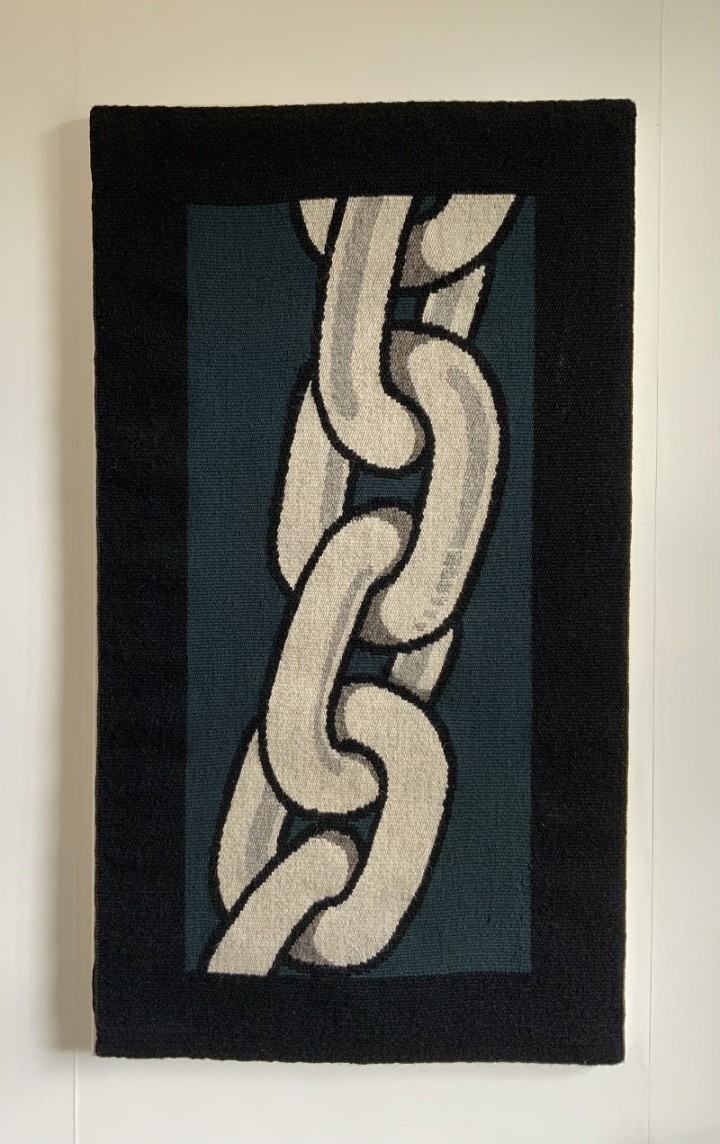 Archie Brennan, 'Chain', 1979. © The Estate of Archie Brennan. Photo by Michael Wolchover.
Archie Brennan, 'Chain', 1979. © The Estate of Archie Brennan. Photo by Michael Wolchover.
The 19 shortlisted works in the 2021 Cordis Prize are currently on show at Inverleith House in Edinburgh, including works two of the artists also featured in Changing Concepts. The £8,000 biennial prize, which is the biggest award in the world for contemporary tapestry, attracted a record number entries this year and was won by Orkney-based Louise Martin for her work ‘Lifetime’, an intricately woven abstract piece using silk, linen, cotton and paper.
While entries have to reference warp and weft, there is plenty of room for experimentation. The show includes concept-driven works such as Angela Maddock’s ‘Cloth Body’, made from shredded garments gifted to her by friends in lockdown, a three-dimensional woven sculpture by Finnish artist Maija Fox, and Jo McDonald’s ‘Reconnection’ made from rope created from the pages of second-hand books. These are shown side-by-side with ambitious woven pieces such as Anne Stabel’s ‘Under the Surface’ and Fiona Hutchison’s ‘Wall of Water’.
Artists are using tapestry to tackle contemporary issues: ‘For Me You Are Valuable’ by Swedish artist Anna Olsson is inspired by selfies taken by young people denied asylum in Sweden, while Zhanna Petrenko from the Ukraine has made a piece called ‘Shroud of Insecurity’, inspired by digital images and considering ideas of fragile self-esteem in a digital world.
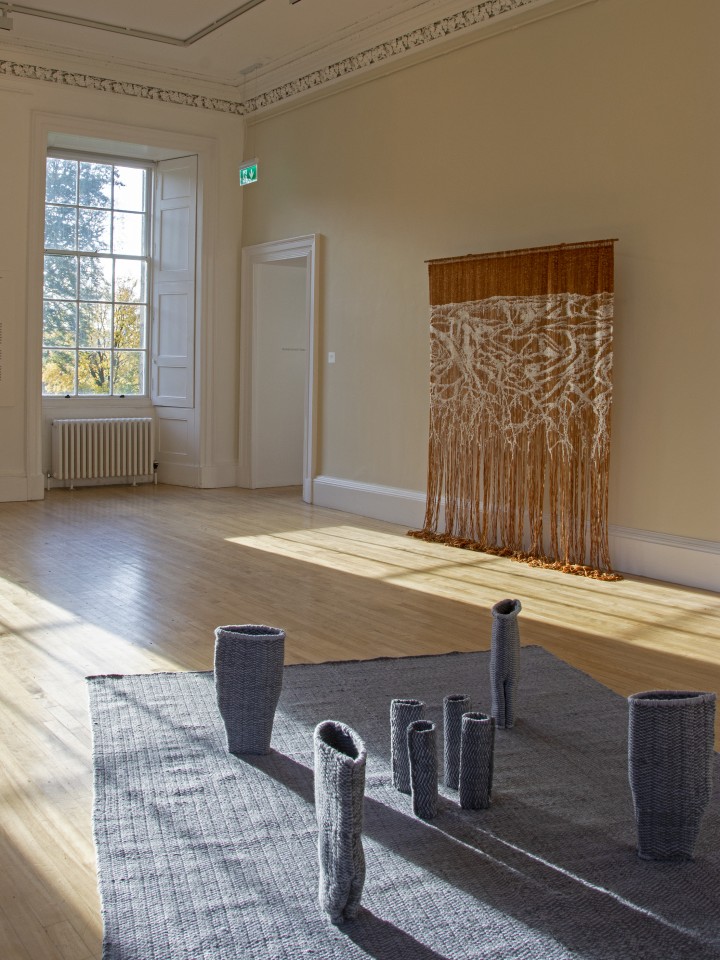 The 2021 Cordis Prize for Tapestry at Inverleith House. Photo by Michael Wolchover.
The 2021 Cordis Prize for Tapestry at Inverleith House. Photo by Michael Wolchover.
Harvey says the exhibition reveals the impact of the pandemic in different ways: 'Pragmatically, if you want to make tapestry, a long time by yourself is exactly what you need. Some people have managed to find in weaving a place apart where they don’t think about this crazy world, others take the crazy world as their subject.'
'I think different media go through cycles in art. Tapestry has always been prestigious, but for a while there was a focus on making things very fast, digitally. That’s the complete opposite to tapestry, which has this haptic quality, it’s slow and meditative. Now it’s back in fashion big time.
'The [Cordis] prize started to encourage tapestry artists to make work that they might not otherwise make, and it’s still vital to encourage them to innovate, experiment and be bold in the statements they make. Edinburgh is a powerhouse of tapestry art, and it’s great to present this showcase to the world in this city.'
Tapestry: Changing Concepts is at the City Art Centre, until 13 March 2022. The Cordis Prize Exhibition, Inverleith House, until 12 December. Entry to both is free.
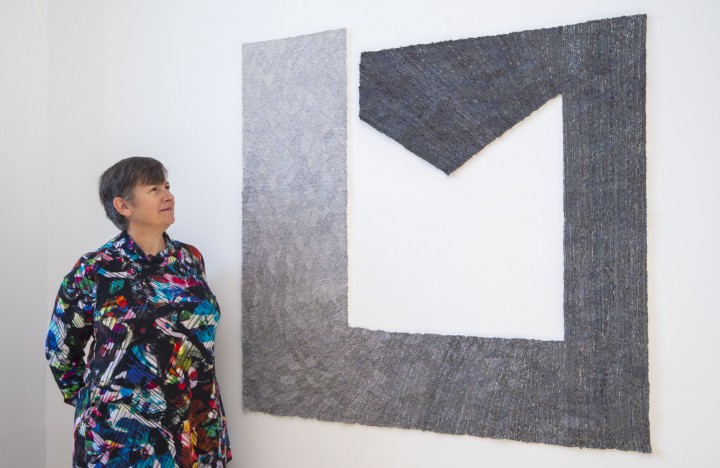 Cordis Prize co-founder Miranda Harvey, with the 2021 Cordis Prize Winning Tapestry 'Lifetime', by artist Louise Martin.
Cordis Prize co-founder Miranda Harvey, with the 2021 Cordis Prize Winning Tapestry 'Lifetime', by artist Louise Martin.
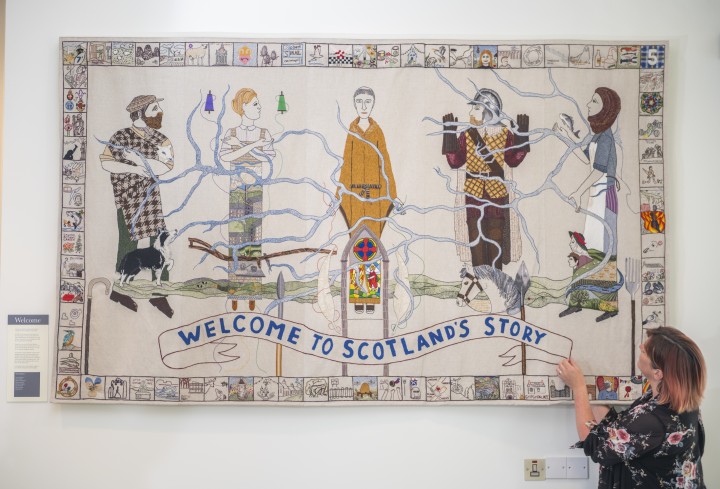 The Great Tapestry of Scotland.
The Great Tapestry of Scotland.
The Great Tapestry of Scotland in Galashiels
Meanwhile, in the Borders town of Galashiels, the doors opened in August on a new permanent home for the Great Tapestry of Scotland. Described as one of the biggest community art projects in the world, the tapestry was made over the course of two years by 1,000 amateur stitchers across the length and breadth of the country.
The tapestry, which came from an idea by writer Alexander McCall Smith, tells the story of Scotland in 160 panels designed by artist Andrew Crummy, with a narrative by writer and historian Alistair Moffat. Over 300 miles of wool recount great events and ordinary lives, from the Battle of Bannockborn to the Borders mill workers, from Walter Scott to the Stanley Baxter. Speaking at the opening, McCall Smith called it 'one of the great art works of our time.'
The new purpose-built visitor centre, designed by architects Page/Park and including the redevelopment of the town’s 19th century Post Office, is a lynchpin of regeneration in a town once made prosperous by the textile industry.
The Great Tapestry of Scotland Visitor Centre is open Thursday-Monday, 9.30am - 5pm. Tickets £10.50 (Concessions £9.50, under 17s £4.50).




